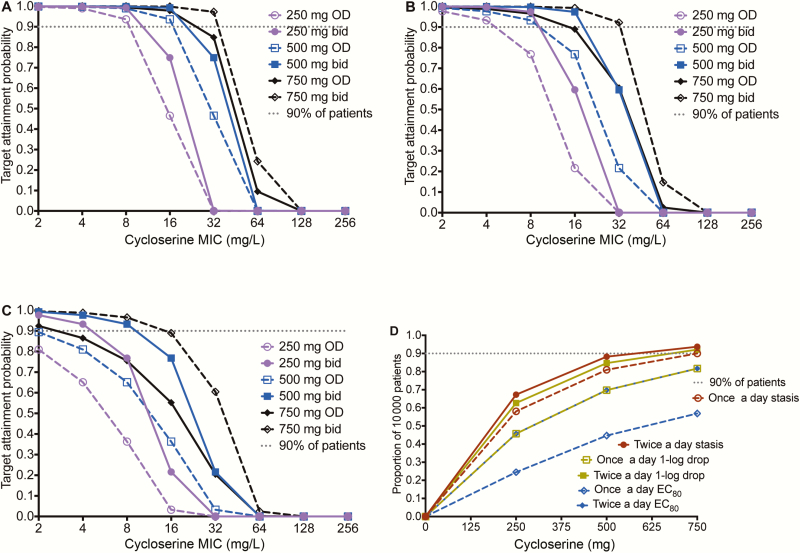Figure 5.
Target attainment probability (TAP) of various d-cycloserine doses in meningitis. Shown are TAP values for 10000 patients with tuberculous meningitis (TBM) and extracavitary compartments of tuberculosis. d-cycloserine has better penetration into cerebrospinal fluid (CSF) than lung cavities. A, The TAP for stasis target exposure demonstrated good performance for the dose of 500 mg twice daily, and only fell below 90% at a minimum inhibitory concentration (MIC) of 32 mg/L, and for the highest dose at an MIC of 64 mg/L. B, For the cidal exposure target, 500 mg twice daily and 750 mg twice daily achieved good TAP up to an MIC of 32 mg/L, such that the majority of patients with meningitis would be expected to achieve exposures that have cidal effect in CSF at these doses. This means that as long as MICs were <64 mg/L, cidal effect was achieved. Given the paucibacillary nature of TBM, this is thought to be the best pharmacokinetic/pharmacodynamic exposure target for meningitis. C, Even with good penetration into the subarachnoid space, the 80% of maximal kill was more difficult to achieve at all doses for MICs ≥16 mg/L. D, Cumulative fraction of patients who achieve responses for each dose. The dose of 500 mg twice daily falls just short of 90% for the cidal effect, but is proposed for use in TBM. Abbreviations: bid, twice daily; EC80, 80% of maximal kill; MIC, minimum inhibitory concentration; OD, once daily.

